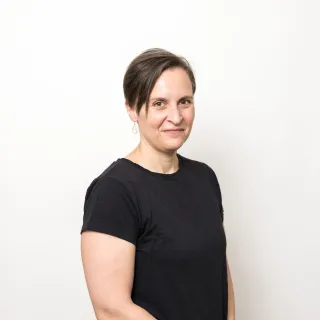Today, nearly half a million immigrants call Minnesota home. Minnesota’s foreign-born residents represent diverse cultures, with origins that are vastly different from our state’s immigrant communities decades ago. This short article will walk you through the immigrant communities that have shaped Minnesota since the late 1800s to today, ending with a nod to the ways that immigration will continue to shape our communities for generations to come.
Before we go any further together: You saw future of immigration in the title and thought, “Hey...here’s someone who can tell me what to expect in terms of immigration policy in the coming years.” Let me quickly level your expectations. We can make educated guesses about upcoming trends in immigrant and refugee arrivals based on what happened during the current administration’s previous administration. We can – but in this article, I won’t.
The past: Minnesota has long been shaped by immigration
Quiz: True or false? Today, Minnesota's foreign-born population is the largest we've ever seen.
Percentagewise, our immigrant population peaked in the late 1800s, when as many as one in three Minnesotans was an immigrant. Today, about one in ten Minnesotans is an immigrant.
Numerically, our immigrant population peaked in the early 1900s. During the 1910 census, more than half a million Minnesotans were foreign born. Today, nearly half a million Minnesotans are foreign born, approaching our peak in the early 1900s.
The present: Minnesota's foreign-born population is unique compared to the nation's
Quiz: Minnesota's largest immigrant community is originally from...
Quiz: The United States' largest immigrant community is originally from...
Minnesota is home to a much higher concentration of African-born immigrants (29%) and a much smaller concentration of Latin America-born immigrants (25%), compared to the United States (6% and 51%, respectively). Minnesota and the U.S. are home to similar shares of residents originally from Europe, Australia, New Zealand, Canada, and Asia.
The origins of Minnesota's foreign-born population have changed a great deal over time. In the late 1800s, our largest communities were German, Norwegian, and Swedish. Today, our largest immigrant communities are Mexican, Somali, Hmong, and Indian.
Another characteristic that sets Minnesota’s immigrant communities apart from the nation is our long history of supporting refugee arrivals. Refugees are a subset of our immigrant communities, and include individuals who sought asylum in the United States due to fear of being persecuted in their home countries due to race, religion, social group, or political opinion.
Quiz: True or false? Today, Minnesota ranks among the top 10 states for refugee arrivals.
Minnesota currently holds the fifth highest rate of refugee resettlement in the nation. In 2024, nearly 3,000 refugees resettled in Minnesota, or 52 refugee arrivals per 100,000 residents. States with higher rates of refugee resettlement include Nebraska, Iowa, Vermont, and Kentucky.
The future: Immigration will continue to shape our communities for generations
Quiz: What percent of Minnesota children have at least one immigrant parent?
Today, one in every five children in Minnesota has at least one immigrant parent. Most of these children are native-born themselves.
Our K-12 schools provide one example of where we see the types of shifts that will last for generations as a result of immigration. In Minnesota’s schools, about one in five students speak a language other than English at home, with the five most common languages (other than English) being:
- Spanish (63,300 students)
- Somali (27,100)
- Hmong (20,000)
- Karen (5,200)
- Arabic (3,300)
Even more astounding is that in the 2024-25 school year, the Minnesota Department of Education recorded more than 300 different languages and dialects spoken in the homes of Minnesota’s students.[1]
This can present immediate challenges for districts, schools, and educators who teach diverse students and communicate with diverse families. But it also means that, every day at school, many of our students are interacting with peers across cultures and languages. Some of our students are learning English themselves, code-switching, translating for family and friends, and navigating institutions and systems for themselves and others. Given these experiences, imagine the ways that all of our students will be better equipped to engage as global citizens, in a global economy, as they mature into adulthood over the next several decades.
Learn more about our immigrant communities:
- Immigrant community profiles
- Needs of Immigrants and the Nonprofit Landscape in the Twin Cities Region - This study sought to understand existing services available, gaps, and wants of immigrant communities.
-
Speaking for Ourselves - This Wilder Research survey asked immigrants and refugees living in the Twin Cities about their perceptions and experiences related to education, transportation, housing, public health, safety, employment, finances, community and social engagement, and the immigrant experience.
[1] Curious about languages spoken by students in your own school district? Download detailed primary home language data here.
